

Apple vs Cheap Knock-Offs; David & Goliath
source link: https://uxplanet.org/apple-vs-cheap-knock-offs-david-goliath-6b2bb0ce3918
Go to the source link to view the article. You can view the picture content, updated content and better typesetting reading experience. If the link is broken, please click the button below to view the snapshot at that time.
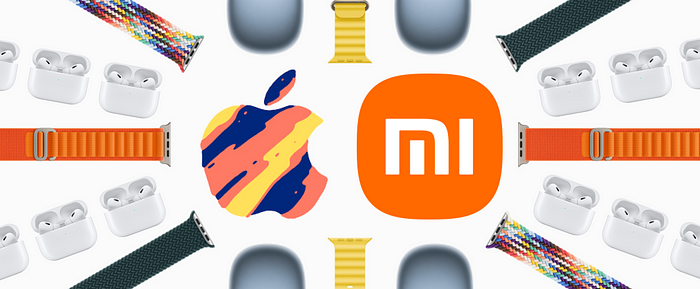
Apple vs Cheap Knock-Offs; David & Goliath
How Apple’s mindblowing product design allows cheap manufacturers to thrive
In the latest Apple event, the company unveiled several things including the new iPhone, a shiny new version of the Apple Watch, a functional range of watch straps, and more incremental updates to the Airpods Pro line-up. To accommodate all these innovations, it released several small but significant software updates. One of those software updates is Dynamic Island. It is one of those features that will soon be copied by third-party apps and giant phone manufacturers like Xiaomi, Oppo, and others. They might not do it as efficiently nevertheless, they will still attempt a version with their unique twist. It seems like it has become a norm for Chinese manufacturers to copy Apple not just in software but also hardware. To understand the knock-off market further, let’s dive deep into the problem space, reasons, and possible solutions to this problem.
Let’s start with the “Why?”
Why does Apple get copied over & over?
Apple releases and adds unique product offerings to its line-up every year. And because of the trust they have cultivated, they earn a strong profit margin with sales bypassing previous years. Yet, there are always people that choose to not port over to the Apple ecosystem. There is a large user base outside of the US that is content and happy with Android products. Why is that? Because Android products are cheap. They provide value at a lower cost and are relatively easy to replace with a new one at fraction of the cost.
On the other hand, Apple products are a proof of high quality, status symbol, and premium product offering that allows people to distinguish themselves from other folks in society. But Apple’s premium products come with a premium price tag as well. This creates a considerable market for lower-salaried people. People with modest needs, lower expectations, and are happy with just a functioning product that fulfills their daily needs. Here is where Chinese companies like Xiaomi, Oppo, Vivo, Amazfit, and others come in.
Since Apple products are costly, and not everyone can afford them, Chinese manufacturers make them for a fraction of the cost. But these manufacturers don’t just offer similar products, they often provide close enough imitation products. This is because Apple products stand for a high-status symbol, and hence, people want products that “look” and work like Apple products but without the exorbitant price tag that comes with them. I believe the design, cost, repairability, and product visibility are the main reasons why Apple products get copied and will get copied in the future —
- Apple product pricing is high and people without the means also want premium products but cannot justify the price.
- Apple products look premium and have become a status symbol on the streets and in society. People without means also want to maintain or up their status symbols by flashing products that look like the ones from Apple.
- There is a stigma attached to Apple’s product repair costs. With Chinese manufacturers stepping into the market, repair becomes cheap, and replacing a faulty product with a new one is also an option that gets considered routinely.
Examples of Digital Replication
It’s funny that sometimes companies like Xiaomi will copy everything from Apple. So much so that they invite memes and criticism from the western markets. A company like Xiamoi holds the status of being the Apple of China. But considering profit margin, they, unfortunately, don’t stand anywhere close to Apple.
When it comes to imitation in software, there is a limit to what copycats can achieve. Here are some examples of Apple’s presentation style, invites, mobile popup dialog, and even store design that got copied by the Chinese manufacturer. Here are two examples, but you can find many more on the web —

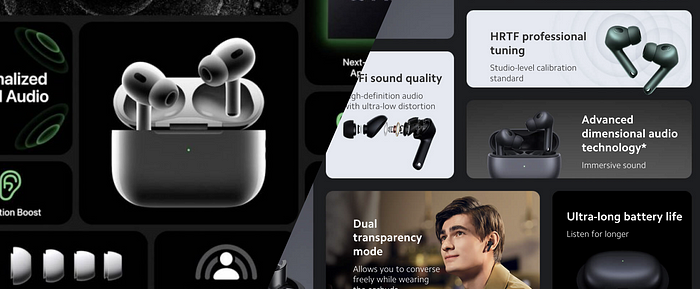
Examples of Physical Imitation
Although making a digital product or presentation style copy comes easy but surely duplicating hardware might be hard right? Probably, probably not. You see it is hard to copy a physical product more than a digital product but Apple hires cost-effective manufacturers in China most of the time. This includes semiconductor manufacturing and small product parts that get assembled in California, USA. Once a product is unveiled on the big stage, I am assuming other Chinese tech companies get to work, dissect Apple products, and break it down into an assembly line that can be replicated easily thru’ the blueprint.
Some of the products that get routinely imitated are Airpods, Watch Series, Macbook, Displays, and the most famous — iPhone form factor. Here are two examples of product comparisons side by side —
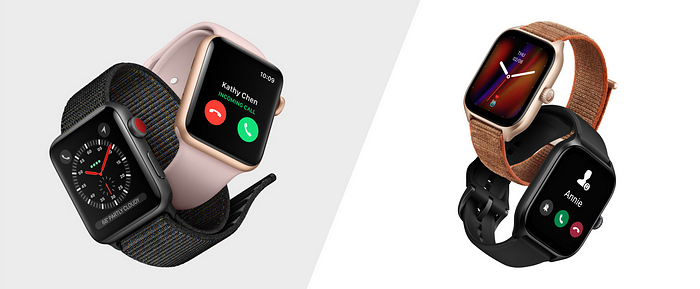
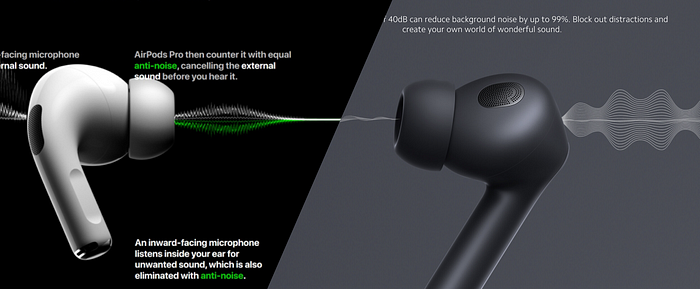
Ecosystem Play
When it comes to hardware products, Apple plays the ecosystem game. Every piece of its hardware comes with Apple’s very own software support built into iOS. This integration helps Apple provide a product offering that supersedes copycats in the market. It also allows Apple to maintain control over the user experience. iOS engineers can tune the OS for very specific hardware. This product integration has allowed iOS’s experience to be more seamless and less buggy than Android.
Currently, Samsung is replicating the ecosystem play and trying to lock down people into its range of products. Like all the duplicates before this, Samsung is carefully imitating Apple’s user experience and adding its twist to the product. But like Apple, it is a long play and needs to be played with strict rules that don’t let people migrate away without some downsides.
Beating Apple by far
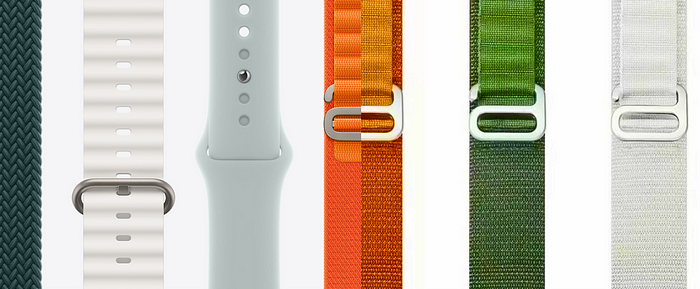
Going back to the hardware products, it looks like they are the easiest to replicate and beat Apple at product quality & pricing by far. One of the main reasons for duplicates to happen within a week of product release is probably because Apple outsources its manufacturing to China. This means they have to share spec sheets that would contain material quality, strength, color dye mixes, and other important variables that help Apple achieve high product quality. Given the speed of replicates, it looks like these specifications get easily leaked among manufacturers, and hence they start offering the same product at 95% less than the original Apple price. Just look at the screenshots below. The left is taken from Apple where Alpine Loop (Green) is priced at 139S$ while the replica is being sold at 6.30S$.
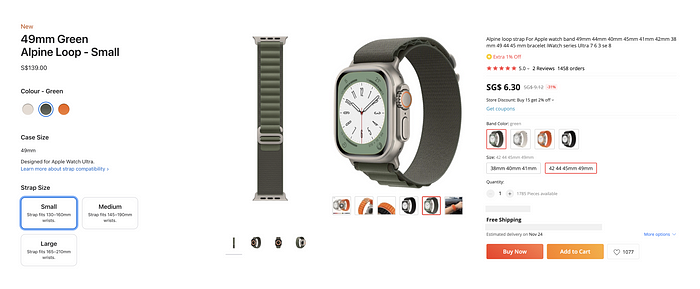
For a watch that is 300$++, probably it is hard for people to justify a cost of 140$ extra for just the strap. Regardless of whether the strap is uber-premium or not. In my opinion, once people are bought into Apple’s ecosystem, small product additions like these can be sold at a reduced margin so that there is no room for replicas to existing or people don’t get motivated to pursue the fake ones.
Risk of buying fake
When it comes to buying fake goods, there is always an inherent risk involved with it. The consumers might end up buying something that is of poor build quality, the good might break or stop working entirely to the point of no return or repair. For electronic items like an iPad or a Macbook Pro, these are genuine concerns that people should consider before buying a fake. But I am not entirely sure if that is the case with something that has a 10$ or lesser value like a watch strap.
Possible solutions with loopholes
So what’s the solution here for Apple to stop companies from duplicating its products? Let’s consider a few of them here and see how they play out.
- Patents: Apple is known to hold a lot of patents and is always looking to copyright its groundbreaking discoveries and technologies. Although patenting something is a great step ahead not everything can be patented. Like in this case, the look and feel behind a product, color, or finish cannot be patented. But these are critical things that make the outer form of a product. Product properties and characteristics are mainly defined by the form factor, color, finish, and over look & feel. Hence, copying of these things cannot be stopped.
- Software: Like hardware, the software can also be easily copied. There are hundreds of tech professionals that can sufficiently study Apple’s product after its launch and replicate every bit of it. Although that is true, something that cannot be easily replicated is the Apple effect. This has been discussed before and once you use a few Apple products, you might realize it quickly. The Apple effect is
- Innovation: Innovation is unbeatable, it always stays one step ahead of the replicas. Among all the points that we have discussed here, being innovative and always optimizing the experience for something better is what Apple stands for and no matter what, no other company can truly copy that. That is because copycats rely on innovative products that can be copied but while that happens, Apple would have already moved to its upcoming innovation.
End Winner & Final Say
Interestingly Apple is not even slightly concerned about other manufacturers that are imitating its products. That is because Apple is the innovator that is driving the copycats and not the other way around. If Apple stops releasing ecosystem-shattering products then these Chinese copycats will cease to exist. They exist because of Apple. The gap in Apple’s product pricing is allowing them to exist and build for the small segment that dreams about owning an Apple product someday.
Although most of what Apple releases can be copied, what cannot be copied is the innovative brains, and product thinking behind everything that the copy does. And so Apple will always be one step ahead of its competitors when it comes to innovation, and awe-inspiring product releases.
Copying is easy, while, creating something unique takes time, courage, research, and a powerful product mindset.
We can tell that Apple is beating its competitors and luring more and more people to its ecosystem by merely looking at the company’s revenue last year. In 2021, Apple made a revenue of $378.32 B, an increase over the year’s 2020 revenue which was $294.13 B.
🙌 Yay! You finished reading all of it
Thanks for making it to the end. I hope you gained something from it. I would love to share more about design in tech (including Apple product dissections) if you found this post insightful. Open to ideas and suggestions ❤️.
Thanks for reading 🥳. Before you go,
👨🏻💻 Join my content verse or slide into my DMs on LinkedIn, Twitter,Figma, Dribbble, and Substack.
💭 Comment your thoughts and feedback, or start a conversation!
Recommend
About Joyk
Aggregate valuable and interesting links.
Joyk means Joy of geeK